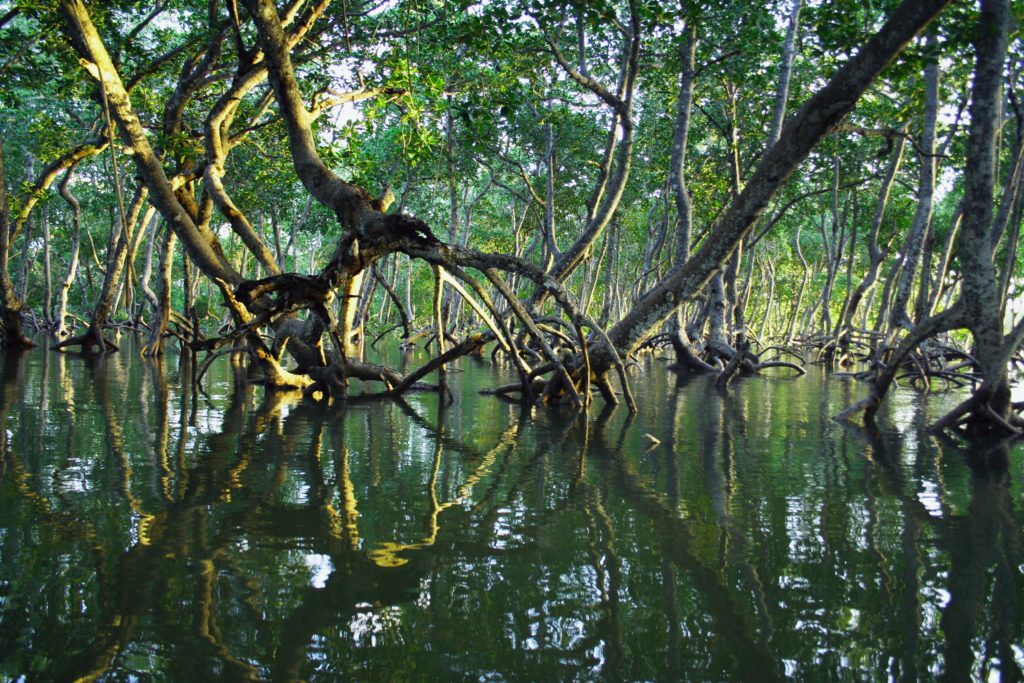We talk about species of animals dwindling in great numbers all over the world. We talk about the Black Rhino, the Giant Panda, the African Elephant, and the Sea Turtles. We’re constantly talking about the ever-changing climate, the melting ice caps. We talk about oil spills, deforestation, and the forest fires that rage on for weeks. But we don’t often talk about the tree species that need our protection. Mangrove trees are trees with tall tangled roots that reach into the ground, but there’s enough above the surface that some animals find shelter there. Picture the spindly aerial roots that sprout off from your favorite Monstera. These trees sometimes even grow directly into the water. There are about 80 different species of mangroves, but many of those are now endangered.
Not only are mangrove trees home to several species of animals such as lizards and fish, but their roots also create a natural barrier that protects coast-dwelling communities from flooding. The roots systems also help filter out pollutants and help block out excess sediment deposits into the water. Furthermore, mangroves are unique trees due to their high carbon uptake from the atmosphere. Mangrove “blue carbon” (water-based) ecosystems are ten times more effective than terrestrial ecosystems at sinking carbon. When mangroves are cut down and uprooted, a lot of the stored carbon in their root systems and what they pull into the soil gets released back up into the atmosphere. Not only does this mean that cutting down Mangroves prevents their uptake of carbon, but it also undoes so much of their work. According to a study published by Environmental Research Letters, mangrove forest soil held approximately 6.4 billion metric tons of carbon in 2000.
These trees are most commonly found in Myanmar, the Philippines, and Indonesia; however, the mangrove forests keep getting cut down to make room for the growing shrimp agriculture industry. Tourism pollutes the water these trees depend on. The lumber, charcoal, and development industries further clear these invaluable trees and their ecosystems. It’s estimated that less than 50% of the original forests remained at the beginning of the 21st century. Because most mangroves grow on public land, there is very little policy to protect them around the world.
Indonesia is taking matters into its own hands. The government of Jakarta, Indonesia, has committed to restoring 150,000 hectares of mangroves by the end of this year. This will go towards their commitment to restoring 1.5 million hectares by 2024. Jakarta already restored a quarter of 150,000 last year, but then the remaining funds were redirected to managing the pandemic response. This restoration goal will help Indonesia be well on its way to meeting its pledge to be carbon neutral by 2060.
Conservation is so important, and it is widely more effective at supporting the regrowth of mangrove forests than planting more and more seedlings as forests get cut down due to the unique nature of the root structures and how the sediment moves around them. Indonesia’s love and commitment to the mangroves and our planet is one I hope more countries will adopt in the future.
Also by Iga: How the Pandemic Has Affected Poaching & Conservation—And Solutions
Get more like this—Sign up for our daily inspirational newsletter for exclusive content!
__
Photo by Timothy K on Unsplash





